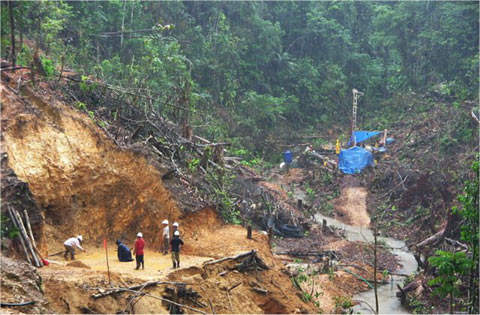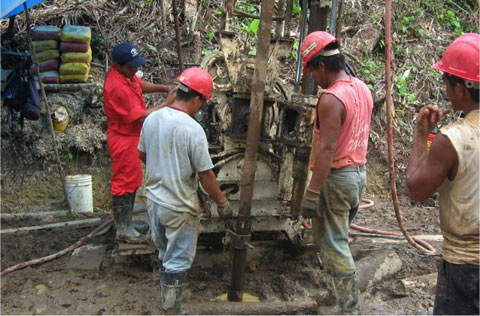The Molejon gold project is about 120km west of Panama's capital Panama City and about 10km from the Caribbean coast.
The project is wholly owned by Petaquilla Minerals. It is spread over an area of 842km2 of concession land. In June 2005, the project agreement was signed by Teck Cominco, Inmet Mining Corporation and Petaquilla.
The partners agreed to transfer their interests in Molejon to Petaquilla Minerals in exchange for Petaquilla obtaining government approval for a multi-phase mine development plan, which it did in September 2005.
The capital cost of the project is about $34m, which has been raised through a combination of an equity issue of $17.56m and an equipment lease purchase finance facility worth $15.8m.
Costs are expected to be less than $200/oz during the initial years of production.
Commercial mining at the mine commenced in January 2010 the construction of a large column and test run in 2009. During the test run the mine recovered 65% of the 846,104t of recovered ore.
As of September 2010, the mine produced an average of 2,444tpd at an average head grade of 3.03g/t. This represents a monthly output of 7,143oz of gold.
Molejon geology
The Molejon area is dominated by Tertiary-age volcanics and subvolcanic intrusives including massive andesitic flows, feldspar-porphyritic andesite flows, andesitic tuffs, and andesitic agglomerates. The andesite has been intruded by feldspar-quartz porphyry and feldspar porphyry. A north-east trending fault is believed to be the major structural control for the emplacement of the hydrothermally altered quartz breccia which hosts the Molejon mineralisation.
Epithermal gold mineralisation at Molejon is associated with structurally controlled zones of quartz breccia and the adjacent fractured and altered andesites and feldspar porphyries. Highest-grade mineralisation usually occurs in the quartz breccia but economic mineralisation also occurs in feldspar-quartz porphyry, and more rarely in feldspar porphyritic andesite flows.
Resources
Molejon has a total measured resource of 593,327oz, an indicated resource of 317,696oz and an inferred resource of 458,502oz at an average grade of 0.665g/t above a cut-off of 0.3g/t.
Gold production
Current throughput of the project is 2,200tpd. It is being expanded to 3,000tpd. Petaquilla produces 100,000oz of gold annually.
The plant uses three ball mills and a carbon-in-pulp processing (CIP) facility, although there are plans to increase production to 5,000tpd in the second phase with the addition of a SAG mill as the supply of mill feed permits.
Processing is done in two stages. Metallurgical testing has shown that 60% of the gold is dissolved in the milling operation, so the classified product from the ball mills is sent to a thickener to separate the clear fraction of the pulp and later sent to a carbon-in-column (CIC) stack, where the gold is caught. It is then sent to the adsorption, desorption and recovery (ADR) plant.
The slurry fraction of the thickener is sent to a battery of six Lix tanks to complete the leaching of the remaining gold. Once completed, the slurry is sent to the CIC facility, the pregnant solution from the CIP circuit is moved to the CIC stack and ADR plant, and the tailings to the tailings thickener and detox plant.
Logistics
Access to the project is primarily by helicopter. A 12km network of trails and rivers provides combined foot and boat access from Coclesito, a village of about 700 inhabitants. 28km of dirt road, accessible only by four-wheel drive vehicles during the rainy season, connects Coclesito with La Pintada, a town of 5,000 people, which in turn is connected to Penonome, which has a population of about 105,000, via a 13km paved highway.
No electricity is currently available on the property. Power is being supplied by five diesel generator sets, although it is envisaged that within two or three years a 115kV line will be built to bring power to the project area.
Water for the project is coming from three wells and an alternate small dam at the Molejon River.
Sococo, of Costa Rica, is the official general mining operation contractor and TechProMin (Chile) carried out the engineering design for the process plant.






